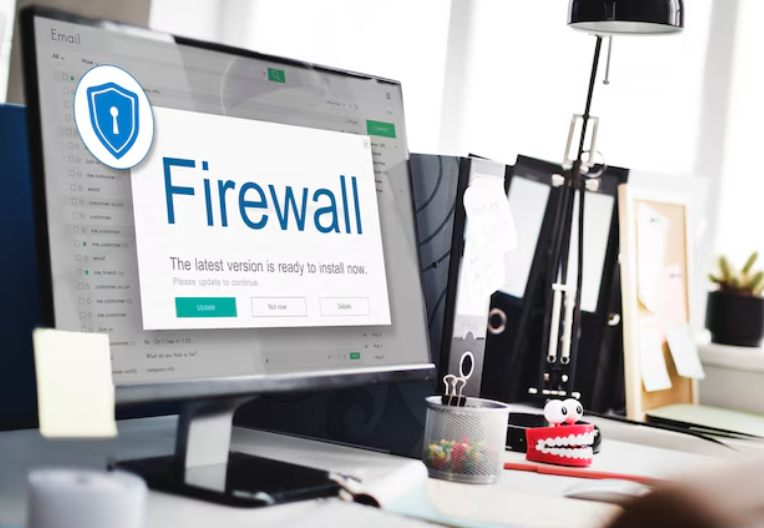
Employee intellectual property (IP) theft has grown to be a major issue in a society going more and more technologically advanced. The dangers to private data have increased as more businesses choose digital collaboration and remote work. Employee misbehavior involving sensitive firm data—that is, insider threats—may cause significant financial and reputation harm. This article looks at sensible ways businesses may protect their intellectual property, stop internal threats, and react fast when needed. By means of practical illustrations and Lauth Investigations’ services, companies can better grasp how to safeguard their most valuable assets.
The Rise of Insider Threats
Though they are nothing new, the frequency of insider threats has risen as the workplace has changed. According to a Ponemon Institute analysis as of 2023 insiders account for around 60% of all data breaches. This alarming figure shows the extent of the risk businesses. Employee access to private company data increases the likelihood of misuse—intentional or inadvertent. Particularly remote work has grown the digital footprint and given additional chances for internal data leaks.
A Rising Concern in Remote Work
Companies have less control over the physical security of their workspaces if workers operate from home or another off-site venue. While remote work solutions include cloud storage, shared document files, and collaboration platforms boost employee comfort of work, they also enable simpler access, transfer, and occasionally inappropriate data access. In these situations, insider dangers are more elusive to find. Standard security protocols might not be enough. This change emphasizes the need for revised, aggressive plans to protect intellectual property.
Real-World Example: Tesla’s Insider Threat Case
Tesla made news in 2023 when a staff member allegedly stole confidential data on its Autopilot program. Allegatively trying to sell the company’s valuable data to a rival, the employee downloaded private files. Through its internal security monitoring systems, Tesla discovered the individual’s actions and set out an alert when massive data access and transfer without appropriate authorization occurred. This situation shows the rising danger of insider threats and the need of having robust digital monitoring measures in place.
Strategy 1: Establish Strong Access Controls
Tight access limitations are among the best strategies to safeguard intellectual property. This means making sure intellectual property and sensitive data are only accessed by authorised staff.
Limiting Access Based on Roles
Least privilege should be the guiding concept for design of access limitations. Employees should only be able to access the data they actually need to carry out their job obligations. A software engineer working on a particular module, for instance, shouldn’t have access to a product’s whole source code. Businesses can drastically lower the likelihood of internal data theft by cutting the number of persons having access to private information.
Implementing Multi-Factor Authentication
By guaranteeing that staff members access critical data only after passing through several security gates, multi-factor authentication (MFA) offers still another layer of protection. MFA allows one to prevent unwanted access even in cases of compromised login credentials for an employee. Companies can demand, for instance, a second authentication method—a phone-based code or biometric verification.
Regularly Reviewing Access Permissions
Access control cannot be fixed once-only. Regular audits help to guarantee that staff members still have access to the data they have been assigned. Review and alter access rights as responsibilities evolve or staff members go. Lauth Investigations provides services to audit internal security policies of a firm, therefore assisting to find any weaknesses in access restrictions and suggest fixes.
Strategy 2: Educate Employees on IP Security
Stopping insider risks depends mostly on employee training. Lack of knowledge causes many breaches when staff members unintentionally reveal intellectual property.
Conduct Regular Training and Awareness Programs
Businesses should set up continuous training courses to inform staff members on the dangers of intellectual property theft, phishing campaigns, and safe handling of private information. Employees should also be informed of the policies of the company on IP protection and the results of violating these policies. Frequent employee testing via fake scenarios or simulated phishing attempts can also support strong security practices.
Promote a Security-First Culture
Beyond instruction, businesses have to create a security-first culture whereby staff members personally commit themselves to protect private data. This entails pushing staff members to document possible weaknesses they come across or suspected behavior. Employees are more likely to follow security procedures and be alert when they realize that safeguarding intellectual property is a corporate top concern.
Example: The Microsoft Insider Theft Incident
Microsoft had a security hack in 2023 in which an employee—who had received training on safeguarding private data—was accused of copying proprietary software code to sell it to a third party. The staff ignored the security systems even though they were in existence. This situation emphasizes the need of combining an informed workforce with effective security technologies. Although Microsoft found the problem fast thanks to training, more strict use of security policies may have completely avoided the intrusion.
Strategy 3: Utilize Digital Monitoring and Analytics
Preventing insider threats mostly depends on proactive monitoring of employee behavior. Although this approach seems invasive, it is necessary to find and react to possible security breaches before they do major damage.
Monitoring Digital Footprints
Particularly when employees access, download, or share private company data, companies should use tools tracking staff members’ digital behavior. This can cover tracking email exchanges, cloud storage use, file transfers, and even actual USB drives. These digital monitoring technologies help companies identify odd activity, including viewing vast amounts of data outside of an employee’s purview.
Setting Up Alerts for Suspicious Activity
Automated alarms can be configured to inform IT teams anytime dubious activity takes place. For instance, the technology can instantly set off an alarm for inquiry should an employee access private files or download vast volumes of data outside of business hours. This fast reaction helps to stop data theft or compromise before it is too late.
Example: The Google Employee Data Theft Case
A Google employee was discovered in 2023 to have been accessing private product data unrelated to their line of employment. Google was able to stop the staff member from distributing the data to outside parties by flagging the unusual access through the company’s digital monitoring systems. This example shows the need of making investments in digital monitoring instruments to guarantee data protection.
Strategy 4: Conduct Background Checks and Vet Employees
A key chance for businesses to stop internal risks is the employment process. Reducing the danger of IP theft can be achieved by first making sure staff members are reliable before allowing access to private information.
Background Checks for New Hires
Before recruiting staff, especially for positions involving access to private data, extensive background checks are absolutely vital. This can cover verifying references, past employment histories, and criminal records. In high-risk situations, businesses could also wish to look closer at the prior behavior of an applicant.
Vetting Contractors and Temporary Staff
Before being granted access to private information, even contractors and temporary personnel should be thoroughly screened. Many businesses ignore this phase since they believe that only full-time staff members represent a hazard. But, especially if they have access to corporate networks or private data, contractors could potentially have the chance to pilfer or use intellectual property.
Lauth Investigations’ Role in Employee Vetting
Lauth Investigations offers services designed to assist businesses in screening possible employees or contractors and evaluating their dependability. Background checks, fraud investigations, and other ways of confirming the integrity of people with access to private business data constitute part of their offerings.
Conclusion
Businesses in the digital environment of today must first give protecting intellectual property from insider threats top importance. Companies have to be proactive in protecting their most important assets as remote work and growing dependence on digital technologies call for. Strong access limits, staff education, digital monitoring, and extensive background checks help companies reduce IP theft risk. Real-world situations such as the Microsoft and Tesla ones show how crucial strong security systems are. Professional investigative services, such those provided by Lauth Investigations, assist businesses to increase their defenses and guarantee that their intellectual property stays safe from insider threats.


